Chemical Kinetics in Non-Equilibrium Thermodynamic...
Chemical engineer Martin Z. Bazant on intercalation waves, lithium iron phosphate batteries, and quasi-equilib...
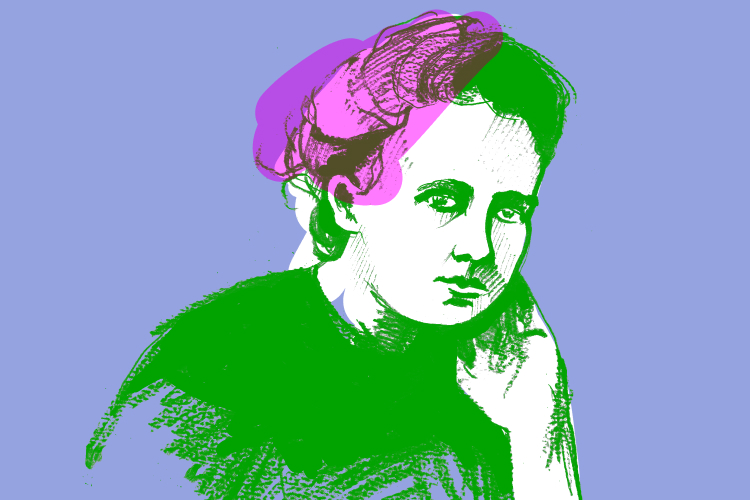
A Polish-born scientist working in France, Marie Curie (1867-1934) was the first woman scientist to become a household word. Even today, many people would answer the question “Who is the most famous scientist of all time?” with the names Isaac Newton or Albert Einstein. If pressed, they could probably come up with the names of other male scientists whose work had a profound impact on the world—perhaps including Nicolaus Copernicus, Gregor Mendel, and Charles Darwin. If they were then asked, “Who is the most famous woman scientist of all time?” most would be able to respond with Curie’s name, although they might not be able to identify her field or her contribution to it—and might not be able to come up with the names of any other women scientists. They might know that she was the first woman to earn a Nobel prize, and perhaps they might also know that she was the first person ever to earn a second.
By opening up the science of radioactivity, Marie Curie, née Maria Sklodowska, along with her collaborator and husband, Pierre Curie, overturned key assumptions of nineteenth-century science. For example, the fact that radium—one of two elements Curie discovered—spontaneously emitted energy without itself undergoing any change seemed to challenge the first law of thermodynamics. According to that law, energy cannot be created or destroyed but only converted from one form to another. Before Curie’s doctoral thesis work shed light on the phenomenon of radioactivity, many scientists believed that all natural phenomena could be explained by referring to Newton’s seventeenth-century elucidation of the laws of gravity or to James Clerk Maxwell’s nineteenth-century elucidation of the laws of electromagnetism.
![Marie Curie in her laboratory in 1905 [Source:www.biography.com]](http://serious-science.com/img/2016/08/Madame-Curie-Paris-631.jpg)
Curie has been the subject of many biographies over the more than eight decades since her death in 1934, written in—and translated into—a variety of languages and aimed at three different reading audiences: adults, young adults, and children. Curie herself, as part of an arrangement with Missy Meloney, an American journalist who arranged for Curie to tour the United States in 1921, wrote, in English, a biography of her husband, who had died suddenly and unexpectedly in a traffic accident in 1906, as well as a brief autobiography.
![A biography of Marie Curie written bu her daughter Eve [Source: www.amazon.ca]](http://serious-science.com/img/2016/08/51PC8ek8YbL._SX311_BO1204203200_.jpg)
Although over the years the story has been revisited many times, the basic facts remain the same, though the spin has differed. Some biographers, for example, choose to ignore the fact that Marie and Pierre Curie, as well as Pierre’s brother, Jacques, all attended séances conducted by the self-styled medium Eusapia Palladino, an Italian spiritualist who claimed, among other things, that she could communicate with the dead. Pierre appears to have gone to his death believing that Palladino’s methods might shed light not only on radioactivity but also on “a whole domain of entirely new facts and physical states in the space of which we have no conception,” as he wrote his friend and physicist colleague Georges Gouy only five days before his fatal accident. Others choose to downplay what seems to have been the first extensive depression she went through (although it was not called that at the time) in the year after she completed high school with the highest honors at the age of fifteen.
For over a half-century, the Curie family consigned to secrecy in an archive at the Bibliothèque Nationale in Paris, the journal in which Curie spilled out her heart as a new and unprepared widow (perhaps a forerunner of Joan Didion’s 2005 The Year of Magical Thinking, which chronicles Didion’s grief in the year following her husband’s sudden death from complications of pneumonia). Several recent biographies, including Quinn’s and Barbara Goldsmith’s 2004 Obsessive Genius, have made use of the journal.
![Marie Curie with Albert Einstein in 1925 in Geneva, Switzerland [Source: fr.wikipedia.org]](http://serious-science.com/img/2016/08/220px-Marie_Curie_and_Albert_Einstein.jpg)
fr.wikipedia.org]
Marie Curie, née Maria Sklodowska, was born in Warsaw in 1867, the fifth and last child of committed Polish nationalists. Seventy-five years before her birth, Poland had been divided among three large powers: Russia, Prussia, and Austria. Warsaw was controlled by the Russian czar, who outlawed the teaching of Polish history, language, or literature. Unable to hide his support for Polish nationalism, Maria’s father lost his job as a teacher of mathematics and physics. His next teaching posts paid little, and the family had to take in boarders. Maria was only eight when her oldest sister died after catching a border disease; less than three years later, her mother also died after a long battle with tuberculosis.
![The wall of the house in Warsaw where Marie Sklodowska was born in 1867 [Source:www.flickr.com]](http://serious-science.com/img/2016/08/15093975861_2d08863787_k.jpg)
The Sklodowski children were determined to pursue advanced studies. Although Maria’s brother was able to study medicine at the University of Warsaw, her sister Bronya had to look elsewhere in Europe for medical training since the hometown university admitted only men until 1915. For a while, Bronya and Maria attended the “flying university”—a secret academy for women that met in changing venues to elude the eyes of the authorities. There they were taught by prominent Polish professionals in a variety of fields. Aware that however enriching these courses were, they were no substitute for a rigorous higher education, Maria and Bronya entered into a pact: Maria would work as a tutor in Poland, setting aside some of her earnings to support Bronya’s medical studies at the University of Paris—the Sorbonne. Once Bronya had the ability to do so, she would help Maria financially so that she could also study at the Sorbonne.
For seven years, Maria worked to fill her part of the bargain, for three of them as a governess in the home of a beet-sugar factory owner about 100 miles north of Warsaw. She continued her own education, thereby reading widely in the factory library, taking a series of chemistry lessons from a chemist at the factory, and studying mathematics through an informal correspondence course with her father.
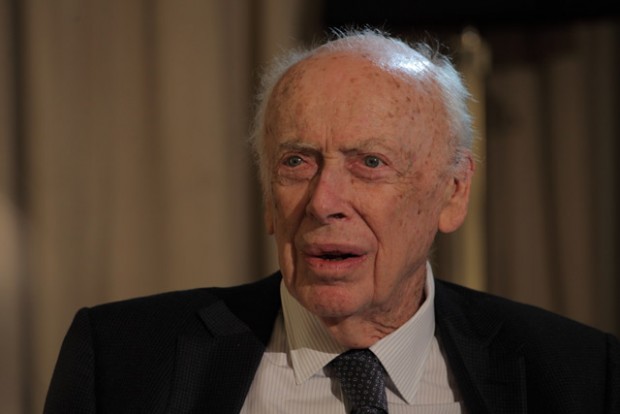
In the fall of 1891, Marie finally was able to travel to Paris, where, now known as Marie Sklodowska, she enrolled at the Sorbonne on November 5. (The date is worth noting since exactly 15 years later, Marie Curie became the first woman professor at the Sorbonne, filling the position left vacant the previous April when her husband, Pierre Curie, died in a traffic accident.) In 1893 she finished first in her class with the equivalent of a master’s degree in physics. Supported by a scholarship, she was able to take a second degree, which she completed in 1894, finishing in second place in mathematics.
Sklodowska, having been commissioned by the Society for the Encouragement of National Industry to study the magnetic properties of different steels, needed space in which to work. Upon learning of Sklodowska’s search for lab space, a Polish scientist visiting Paris introduced her to Pierre Curie. Despite Curie’s title—Laboratory Chief at the Paris Municipal School of Industrial Physics and Chemistry—his lab facilities were poor, but he made room for Sklodowska anyway.
Although Sklodowska had intended to carry out her professional career in Poland, where she returned for a vacation in the summer of 1894, a letter from Curie convinced her to prepare for her doctorate in physics at the Sorbonne. In summer 1895, Marie Sklodowska married Pierre Curie. In the summer of 1896, she again came in first in a qualifying exam—this one certifying her competence to teach science to young women. By the summer of 1897, she had completed her study on the magnetic properties of steel and received payment for it. And before that summer turned to fall, she and Pierre became parents of their first child, Irène, who 38 years later became the first child of Nobel laureates to become a laureate herself.
![Marie Curie with her husband Pierre in École supérieure de physique et de chimie industrielles de la ville de Paris, (42, rue Lhomond) 1898 [Source:www.en.wikipedia.org]](http://serious-science.com/img/2016/08/marie-curie.jpg)
Despite the terrible blow dealt to Marie when she suddenly became a widow and single mother in April 1906, she returned to her lab shortly afterward. In the course of the year, she not only established herself as a university professor but also isolated pure radium metal and accepted the responsibility of defining the international standard for measuring radium.
![Nobel Prize diploma in chemistry, 1911 [Source:www.fr.wikipedia.org]](http://serious-science.com/img/2016/08/Dyplom_Sklodowska-Curie.jpg)
During the First World War, Curie put X-ray technology to use in military hospitals by running a radiology service, employing her older daughter, Irène, as an assistant. She also used her intimate knowledge of radium for the war effort by introducing radon therapy to France.
Following the war, Curie spent the remaining years of her life establishing and leading the Radium Institute, run jointly by the Pasteur Institute and the University of Paris. She conceived of it as a laboratory befitting the memory of her deceased husband and collaborator. The scientists who worked there included Irène and Frédéric Joliot, who, as a married couple, discovered artificial radioactivity in January 1934. Marie Curie lived long enough to witness the announcement of their discovery but died that summer, depriving her of the joy of seeing the Joliot-Curies accept the 1935 Nobel Prize for chemistry.
Curie’s main scientific achievement lies in initiating the process of disproving that atoms are indivisible and unchangeable. Marie Curie’s choice of her thesis topic followed the discovery of two new phenomena in 1895-6: Wilhelm Roentgen’s discovery of X-rays, a previously unknown ray that was able to travel through solid substances, and Henri Becquerel’s accidental discovery that, even without exposure to light, a uranium sample could fog a photographic plate. While many scientists were intrigued enough by the first discovery to explore it further, few followed up on Becquerel’s work. Curie saw an opportunity to explore an ignored phenomenon, and she began research as soon as she found a storeroom at Pierre’s institution where she could do so—though visiting scientists would later marvel at her ability to make important discoveries in such a poor excuse for a lab. Testing different compounds of uranium, she determined that compounds with a higher proportion of uranium emitted the most intense radiation, and it soon dawned on her that the emission of rays by uranium compounds is an atomic property unrelated to the compounds’ chemical and physical properties.
![The Curies and Henri Becquerel shared the Nobel Prize for physics in 1903 [Source:www.filosofiaagressiva.blogspot.com]](http://serious-science.com/img/2016/08/nobel-99.jpg)
She later attributed the lengthy time invested in establishing the identity of radium as a new element to the drawbacks of the damp storeroom in which they worked. She did not succeed in isolating polonium, though it wasn’t until Ernest Rutherford and Frederick Soddy, working in Canada, explained the process of radioactivity that she understood why: the half-life of polonium is only 138 days, and it decayed too rapidly for her to isolate.
https://www.youtube.com/watch?v=azwesgfZ1b8
Becquerel’s discovery on its own would certainly not have merited a Nobel Prize only a few years later. The Curies needed his discovery in order to achieve what they did, but Becquerel needed their work for his discovery to be so highly honored. A few months after Roentgen’s discovery of X-rays, Becquerel accidentally discovered that a uranium ore sample gave off emissions that fogged photographic plates even without their being exposed to light. He reported this discovery to the French Academy of Sciences in February 1896, but he did not follow up on it, and few scientists paid much attention to it. Among the reasons Marie Curie chose this serendipitous discovery as her thesis topic was precisely the fact that she would have no competitors in the field, with the added bonus that there was no lengthy bibliography of scientific articles that she would have to read in preparation. She could get her hands dirty in her lab right away without months spent in a library.
Pierre’s contribution as a collaborator was significant. He and his brother had previously designed an electrometer that enabled Marie to make precise measurements of the very faint electric fields generated by uranium rays as they traveled through air. When his wife’s work suggested that pitchblende and chalcolite contained an as-yet-undiscovered element that was more radioactive than uranium, he put aside his own work on crystals to expedite the search for the new element. After their discovery of polonium and radium, the Curies decided on a division of labor: he concentrated on investigating the physical properties of radium while she did chemical experiments with the intent of preparing pure compounds.
![The page showing the first atomic weight determination of radium [Source: www.kth.se]](http://serious-science.com/img/2016/08/50b00614cdd2556678d1a90251c450aa.jpg)
The Curies chose the name Polonium in honor of Marie’s native land. The name radium derives from the Latin word radius, meaning ray. (Scientists soon learned, however, that some of the mysterious “rays” emitted by radioactive substances were particles—alpha particles and beta particles. A third type of radiation—gamma rays—are true rays, more energetic than X rays, and capable of deeper penetration than alpha or beta particles. Like X-rays, gamma rays are electromagnetic waves.)
The Royal Swedish Academy chose the wording of the Curies’ Nobel Prize for physics very carefully to allow for the possibility in the future of a second Nobel Prize for chemistry. The award conferred the attendant honor upon the recipients for “their discovery of the spontaneously radioactive elements.” It does not refer specifically to the Curies’ discovery of polonium and radium. The Nobel Prize for chemistry was, in fact, awarded to Marie Curie “in recognition of her services in the advancement of chemistry by the discovery of the elements radium and polonium, by the isolation of radium and the study of the nature and compounds of this remarkable element.”
Regarding Marie Curie’s two Nobel Prizes, it is worth noting some interesting background information. First, Marie was not really nominated for the physics award. From the time the first Nobel Prizes were awarded in in 1901, there has been a nomination process of potential laureates followed by a lengthy evaluation of their achievements. In 1903 the French Academy of Sciences nominated Henri Becquerel and Pierre Curie as candidates for the physics prize, omitting Marie. Marie might have been denied recognition for her work if Swedish mathematician Magnus Goesta Mittag-Leffler, a member of the nominating committee, had not intervened in her favor. In a letter to Pierre, the mathematician informed him how things stood. Pierre responded that it would be unthinkable to bestow a Nobel Prize for research in radioactivity that did not acknowledge Marie’s central role. The result: A 1902 nomination of Marie Curie was validated for 1903.

So many people over the nearly century and a quarter since the Curies undertook their research have built on it that it seems to make sense to mention only a few of the earliest contributors. The first to really understand what was going on inside radioactive elements were the New Zealand-born physicist Ernest Rutherford (1871-1937) and his colleague Frederick Soddy (1877-1956), an English radiochemist. Their revolutionary explanation of the process of radioactive decay earned Rutherford the Nobel Prize for chemistry in 1908 “for his investigations into the disintegration of the elements and the chemistry of radioactive substances.”
In 1907, Bertrand Boltwood, an American physicist and close colleague of Rutherford’s, pioneered the use of radiometric dating, which has become the primary source of information about the absolute age of rocks and other geological materials. The method compares the amounts of a naturally occurring radioisotope in the material with the number of its decay products. Also in the United States, Willard Libby pioneered another radioactive dating method, radiocarbon dating, for which he received the 1960 Nobel Prize for chemistry. This method uses the properties of a radioactive isotope of carbon to determine the age of an object containing organic material.

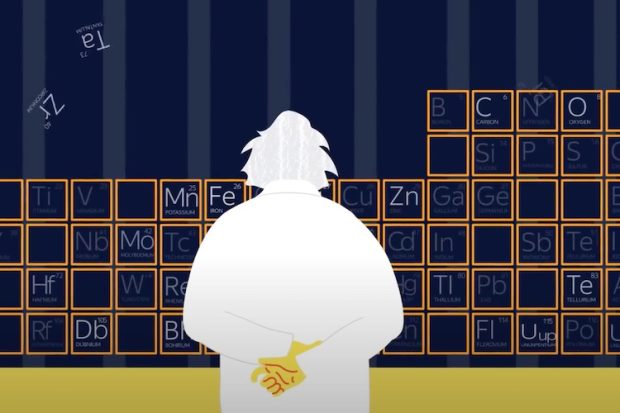
Many uses for radioactivity have been found over the years. Among the scientifically most important is the use of radioactive isotopes to smash atoms to reveal the mysteries of their structure. Radioactive isotopes are used not only in scientific research and in medicine but also in different industries, such as the energy industry and the food industry. In an example of the first, weak spots in oil-pipeline welds can be discovered by using gamma rays, thus conserving fuel and limiting the release of carbon into the atmosphere. In the second case, radiation from radioactive isotopes can destroy organisms that spoil food and lead to disease.
In accepting the Nobel Prize for physics, Pierre concluded with a prescient cautionary remark. Acknowledging the possibility that, in the wrong hands, the properties of radium (and, by inference, other radioactive materials) might prove harmful, he continued: “And here the question can be raised whether mankind benefits from knowing the secrets of Nature; whether it is ready to profit from it, or whether this knowledge will not be harmful to it.” Pierre reminded his audience that Alfred B. Nobel—the very man for whom the prize was named—had made the awards possible thanks to a fortune based on his invention of dynamite. In this way, Nobel demonstrated that while, on the one hand, explosives have the potential to support warfare and lead to death, on the other hand, they can also encourage intellectual and humanitarian achievement and thus benefit the public. He concluded his acceptance address by saying, “I am one of those who believe with Nobel that mankind will derive more good than harm from the new discoveries.
The consequences of Curie’s work with uranium compounds and of her discovery of radium and polonium have had both positive and negative consequences for humanity, and there are honorable people on both sides: those who believe that the good outweighs the bad and those who believe the opposite.
![Marie Curie in her laboratory [Source:blogs.ucl.ac.uk]](http://serious-science.com/img/2016/08/marie-curie_toned.jpg)
Little, if any truly significant information remains to be discovered about Curie’s scientific development. Her most productive scientific years were those that yielded the two Nobel awards, and—while she continued to attend and contribute to scientific conferences and to write books and some papers—the last years of her life were devoted primarily to administration and to fundraising. An example of what may still come to light about her falls more in the category of evidence that the hero has feet of clay.
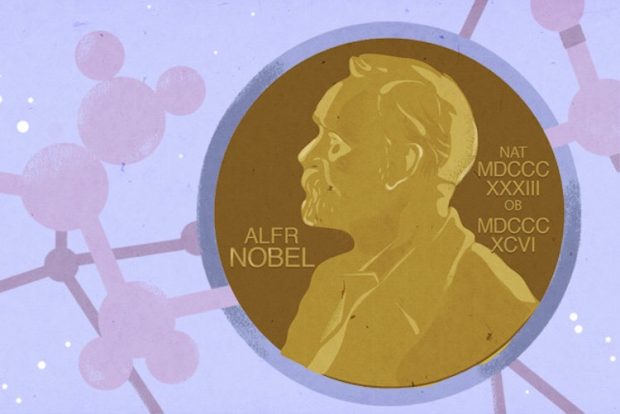
On December 3, 2014, a disturbing article appeared in The New York Times Sunday magazine section under the title “My Great-Great-Aunt Discovered Francium. And It Killed Her.” Written by Veronique Greenwood, a great-great-niece of Marguerite Perey, it condemns Curie for disregarding methods to protect her researchers from radiation poisoning that were employed in other labs. Perey joined the Radium Institute at the age of 19 in 1928 as Curie’s personal technician, and there she became an expert in isolating radioactive elements. In 1938, four years after Curie’s death from aplastic anemia, Perey discovered a new element, which, in deference to Curie’s naming polonium in honor of the country of her birth, Perey named francium. In addition to describing her great-great-aunt’s agonizing death from cancer in 1975, Greenwood lists the names of other researchers at the Radium Institute who suffered from severe radiation sickness. Toward the end of the article, Greenwood brings up a troubling conjecture about the culture of the Radium Institute: “You almost get the impression that in the Curie lab, dedication to science was demonstrated by a willingness to poison yourself—as if what made a person’s research meaningful were the sacrifices made in the effort to learn something new.” Even the most famous woman scientist in the world is neither flawless nor immune to some pertinent criticism.
Pasachoff, N. (1996). Marie Curie and the Science of Radioactivity. New York: Oxford University Press.
American Institute of Physics web exhibit: https://www.aip.org/history/exhibits/curie/
Edited by Polina Avdonina
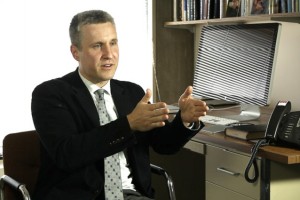
Chemical engineer Martin Z. Bazant on intercalation waves, lithium iron phosphate batteries, and quasi-equilib...
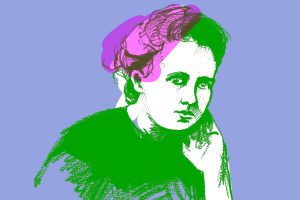
Biographer and historian of science Naomi Pasachoff on the discovery of radium and polonium, acquaintance with...
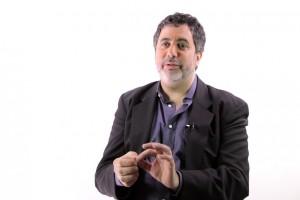
Chemist Mark Tuckerman on the laws of motion, observables, and the Monte-Carlo approach